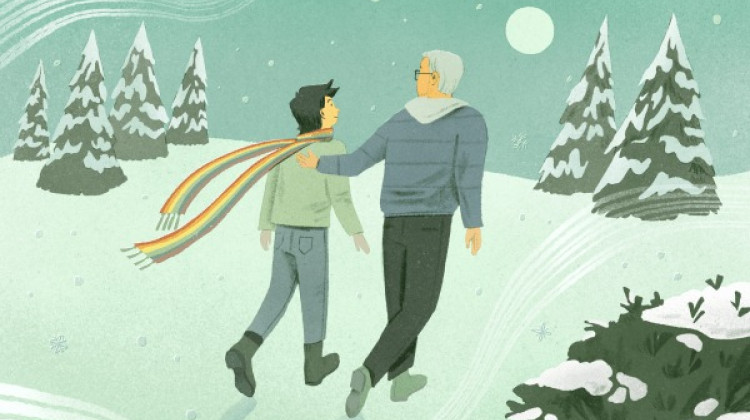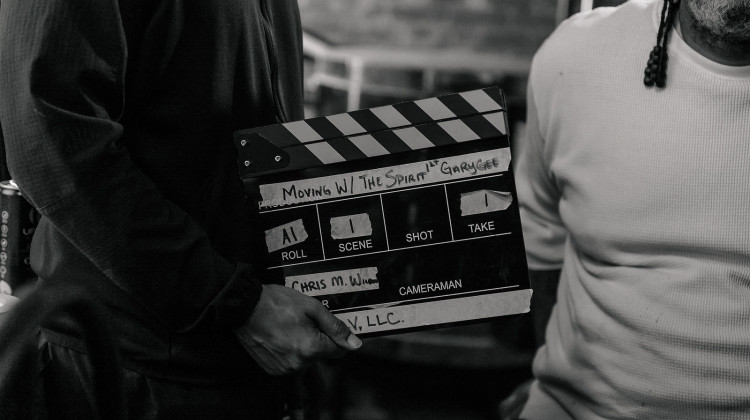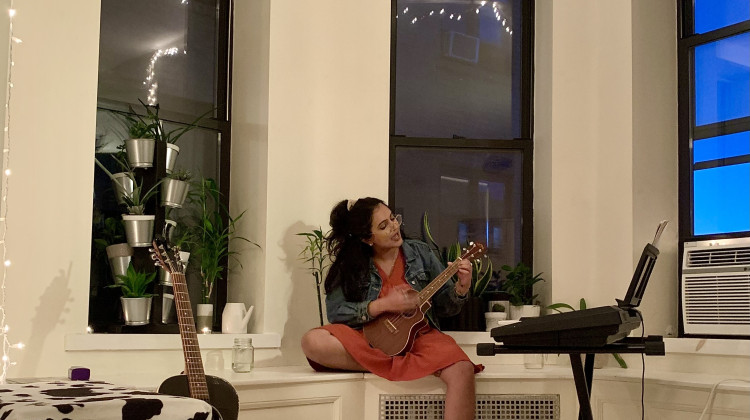
Wine made from a range of Indiana and California grapes ages in custom-made barrels at Two-Ee’s Winery near Huntington.
Annie Ropeik/IPBIndiana’s growing number of wineries and small vineyards want to make the Hoosier state synonymous with wine country.
Yet, a tricky climate limits what grapes they can grow in-state, and complex regulations limit where they can sell the resulting wines.
So these local wine destinations are finding other ways to make their marks.
At Two-Ee’s Winery near Huntington, the barrels and tanks in the production room are full of juice from grapes you’ve probably never heard of.
Wine-maker Eric Harris rattles them off: Tannat, Aglianico, Norton and Dolcetto bought from California, and Marquette, Traminette and Cayuga from Indiana, among others.
What you won’t find here are big names like cabernet or merlot, which Harris says don’t grow well in the Hoosier State.
“St. Elmo is a great restaurant in Indianapolis, and they’re world-renowned for their shrimp cocktail, but they’re not getting their shrimp from the White River, right?” Harris says. “So we try to stick with what we’re good at, and leave the grape-growing, for the most part, to partners that … work alongside us to make a good product.”
Even the acre or so of grapes that Two-Ee’s does grow itself is a risky investment. Two years ago, winter weather wiped out the whole crop, and Harris says they’re still waiting for the vines they put in after that to mature.
If those were their only supply, he says, they’d be out of wine.
“I don’t know that customers are willing to tolerate that,” he says. “So our focus is, produce a quality product through a good partnership with growers.”
That’s the new normal for more and more Indiana wineries. The state has more than 90 now, up from single digits in the 1990s. Most grow some grapes, but very few grow everything they need.
It means Hoosier wineries have embraced some pretty niche choices.
“Any day of the week, you can go to the liquor store or grocery store and there’s a whole wide range of wines from Europe or California that fit that need,” says Purdue University viticulture professor Bruce Bordelon. “So rather than be really competitive there, we’re offering something that our consumers really can’t get from those markets, but do find here.”
This assumes people can buy the wine – which is easier said than done, under broad federal and state regulatory restrictions. Indiana’s alcohol code is so complex, in fact, that lawmakers have tasked a two-year study committee with finding ways to modernize it.
Purdue enologist Jill Blume says wine-makers lose a lot of money selling through wholesalers to stores and restaurants – and that’s just in-state.
Only the biggest players, like Oliver, Huber and Easley, distribute across state lines. Blume says most others do better closer to home.
“Every winery in Indiana is a little bit different, and they each have their own story,” she says. “All of them desire to be in stores and restaurants, for sure, so they can sell more wine and bring more customers to them, but I think the main goal for most all the wineries is to bring customers to the winery.”
Eric Harris at Two-Ee’s (he and his wife Emily are the two E’s) says wineries are a build-it-and-they-will-come kind of enterprise. It’s getting them come back that’s the trick.
He walks onto a roomy, shady back patio, at the foot of a grassy slope beneath their small vineyard. They host food trucks, concerts and, of course, wine tastings here.
Even on a hot Monday afternoon, a dozen or so people are sitting at tables beneath the pergola, talking, laughing and sipping wine slushies.
Harris, who earned an enology degree to prepare for starting this business, admits he was opposed to the slushy idea at first. But he came around.
“Right away, it was a huge hit. I was like, okay, we’re gonna have to really ramp this up,” he says. The slushies contain a secret ingredient, which he won’t divulge.
Harris doesn’t mind experimenting, as long as it leads to top-notch products. He expects the same from other Indiana wineries. They’re not his competition, so much, as his community.
“If a winery fails, or creates a really poor product – if we’re not working together, somebody from out of town may stop in, stop at that winery and it could be garbage,” Harris says. “And that’s their interpretation of the entire industry.”
In a state with a fledgling wine circuit, what’s good for the grape is good for the vine.
 DONATE
DONATE







 View More Programs
View More Programs


 Support WFYI. We can't do it without you.
Support WFYI. We can't do it without you.